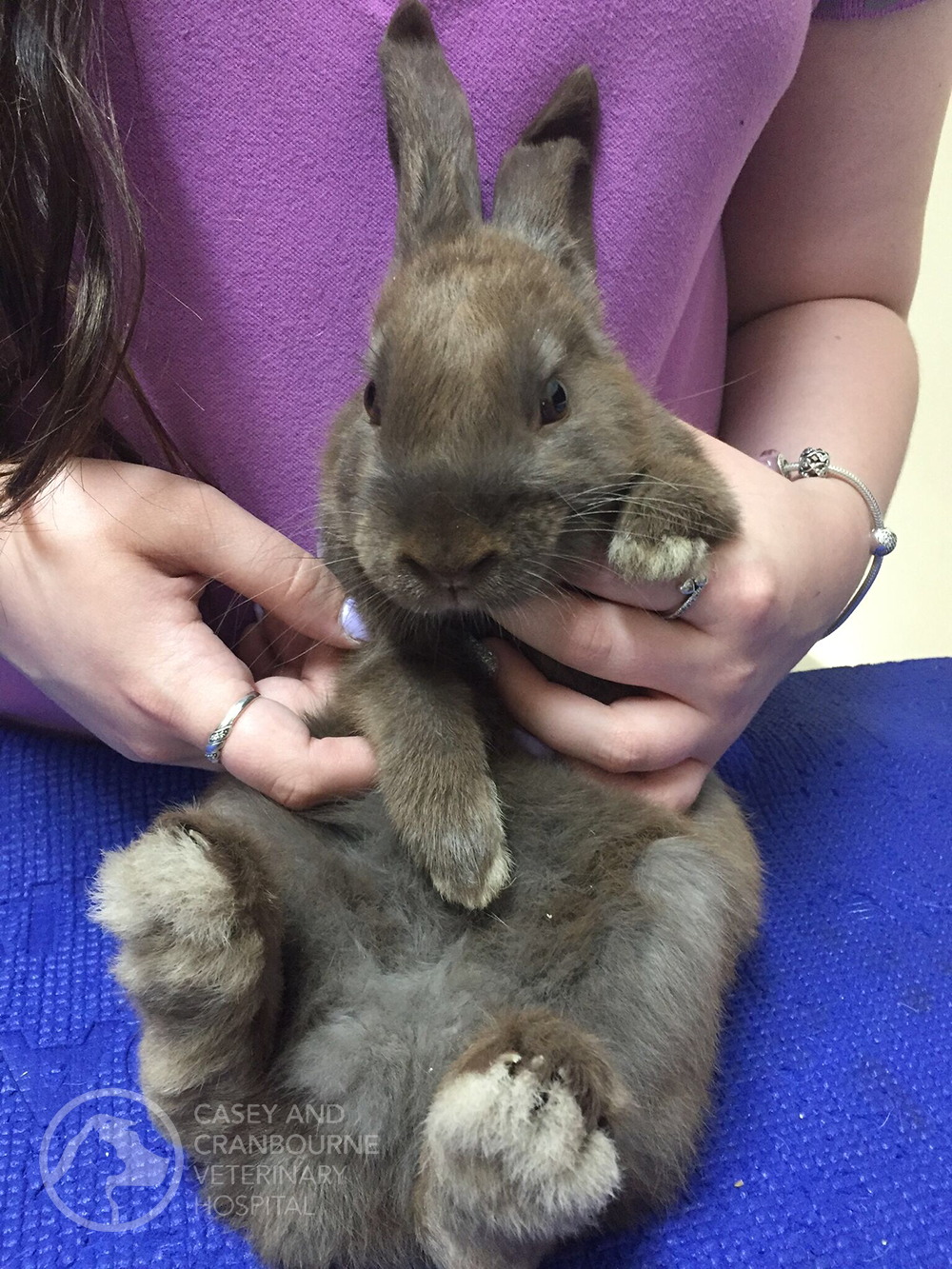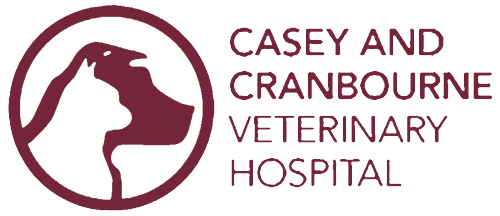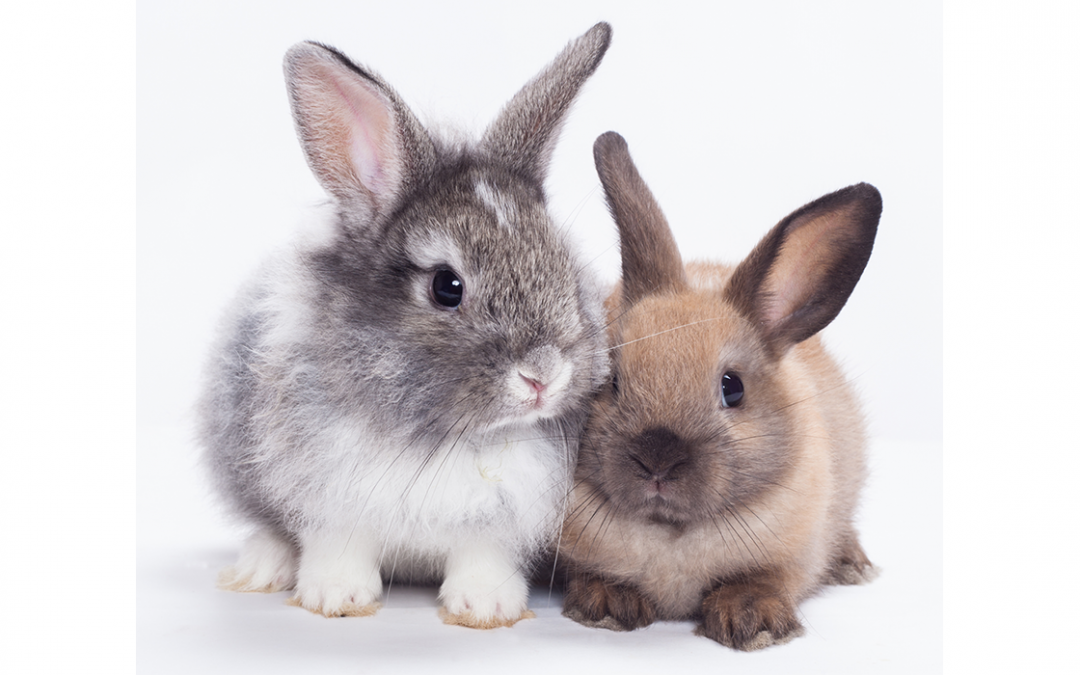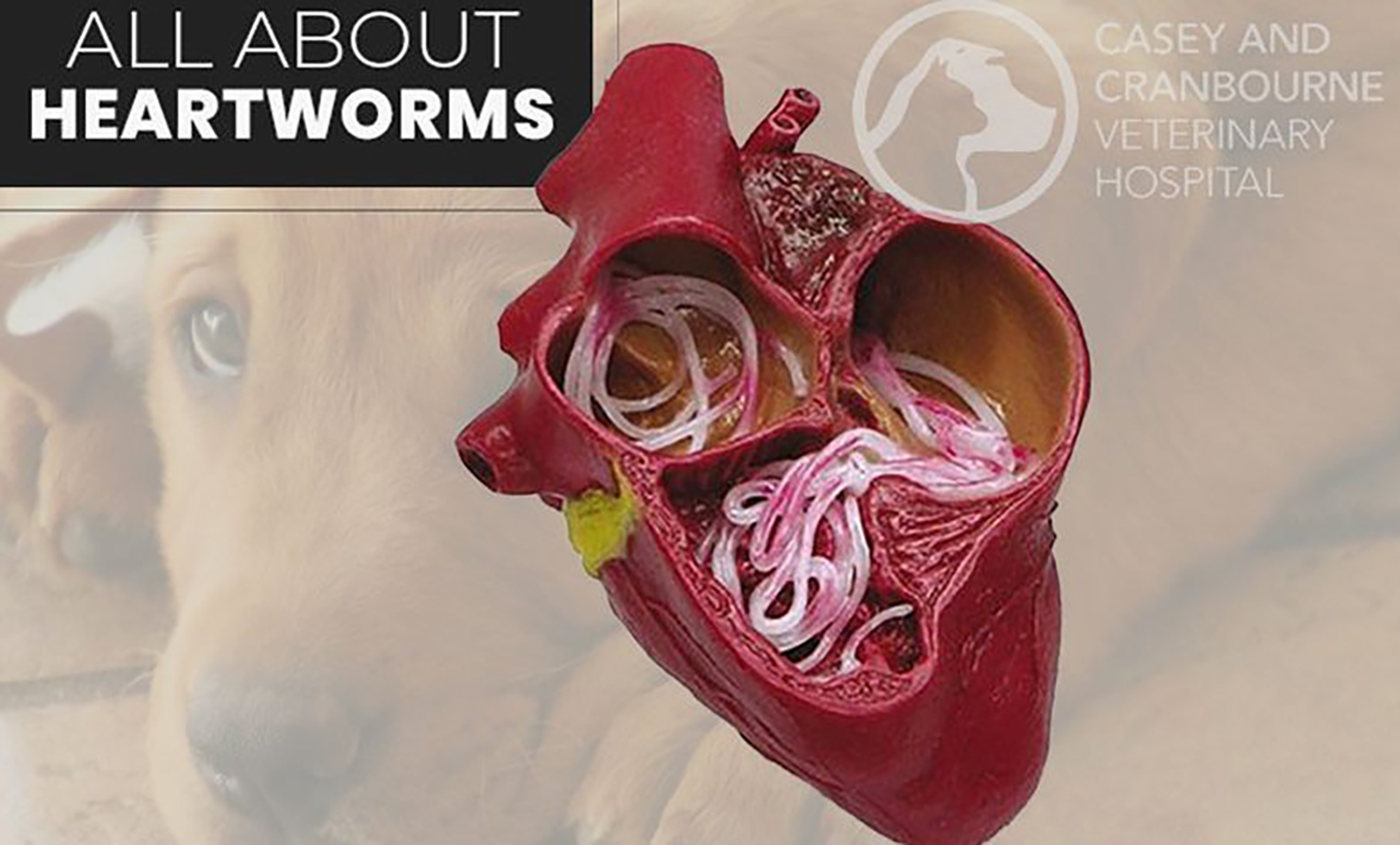Handy hints and tips on rabbits and what to feed them
As it’s Easter time and we have a resident stray rabbit at the clinic, we thought it would be appropriate to write an article on what to feed rabbits….
Rabbits are hindgut fermenting herbivores and are selective feeders who prefer to eat the more luscious parts (leaves and shoot tips) of vegetation. The natural diet of rabbits is a large volume of high fibre foods which helps to naturally wear teeth.
As an adaptation, rabbits have evolved constantly growing teeth (these grow at a rate of 2-3mm per week). Eating fruits, seeds and roots is normally opportunistic to rabbits and should not make up a significant portion of their diet.
Caecotrophy
Rabbits are also very special in that they participate in a behaviour called caecotrophy. Rabbits produce caecotrophs (often called night poo) from their digestive system, which are full of vitamins and amino acids. These caecotrophs are different to the hard faecal stools passed during the day. Rabbits catch these ‘night poos’ as they are passed and reingest them. This enables them to get maximal nutrition from their diet. Caecotrophy occurs especially at dawn and dusk and when a rabbit is feeling comfortable in its environment.
When a rabbit’s diet is over-nutritious or there is an imbalance in the bacterial flora in the gut, caecotrophy may not occur. This leads to an accumulation of caecotrophs on the rabbit’s bottom which can increase the likelihood of skin infections, matted hair and fly strike.
Hay should be the mainstay of every rabbits diet. You need to provide as much fresh hay as they will eat. It maintains the digestive system and helps to provide dental exercise preventing dental problems. Hay should be available all the time.
Hay, ideally oaten or grass hay, should make up 80-90% of a pet rabbit’s diet. The rest of their diet should consist of fresh vegetables and dark leafy greens and grass.
It is very important to provide the best quality hay to your rabbit, they are often very fussy and will only eat large amounts of the best hay around! There are a few important points when it comes to choosing the best and tastiest hay…
Always check that your hay:
- Smells fresh
- Looks green
- NO prickles
- NO excessive dust
- NOT too dry and crackly
- NOT in a plastic bag (increased humidity is created and this hay generally has less taste. Plus you cannot see the hay properly)
It is very important to remember that any diet change has to be done gradually, even with the introduction of a new bale of hay, fruit, vegetable or brand of pellets. If you are introducing a new bale of hay, slowly introduce the new by mixing with the old bale. When introducing any new food or removing pellets or muesli mixes from the diet, always do so slowly over a few weeks to avoid digestive upsets. Rabbits, like humans are all different and as such some may be unable to tolerate certain foods. Only give a small amount and wait for 24 hours, if your rabbit produces soft poo, withdraw the food and try with something else after everything has settled back to normal. Allow 5 – 7 days before making any other additions. Always wash food first and don’t feed plants from roadsides or that may contain pesticides.
The first rule of feeding bunnies and their delicate tummies is: if in doubt – don’t let them eat it! Rabbits have strong tastebuds and will try anything even if it’s poisonous – it’s up to you to protect them! The following list was taken from the Rabbit Welfare and Fund (UK) website.
The ideal diet is mostly hay with a variety of different greens (approx 1/2 cup of greens per kg body weight, being made up of a little bit of everything and not too much of one thing). It is best to keep a consistent diet once you work out what your rabbit likes. Many pellets and mixes available in the supermarket and pet shops are very high in protein, fat and sugar. If your pet’s main source of food is low quality pellets, they will most likely be overweight and prone to stomach upsets. Muesli mixes, even when marketed at bunnies are JUNK FOOD. They pick out what they want and, like us, this is often what is the tastiest but least healthiest for them (generally the pieces of dried fruit, sunflower seeds and nuts).
Diets high in pellets and mixes cause a high risk of urinary problems, intestinal problems, nails and feet problems in your pet rabbit.
A good quality pellet will contain at least 18% fibre. A limit of one tablespoon of a good quality high fibre pellet, like Oxbow, is enough to supplement a balanced diet for your pet rabbit.
The following list includes vegetables, fruit and herbs that are safe to feed rabbits.
So which vegetables can rabbits eat?
- Artichoke leaves
- Asparagus
- Baby Sweetcorns (but not full size ones)
- Beetroot (care with leafy tops as high levels of oxalic acid) – can cause gas so limit
- Broccoli (and its leaves, including purple sprouting varieties) – can cause gas so limit
- Brussel Sprouts (leaves and sprouts) – can cause gas so limit
- Cabbage (can sometimes cause digestive upsets) – can cause gas so limit
- Carrots (& carrot tops) – not the roots as they are high in sugars. Carrots should be limited due to high sugar content.
- Cauliflower (and the leaves)
- Celeriac
- Celery leaves
- Chicory
- Cucumber
- Curly Kale
- Fennel
- Green beans
- Kohl rabi
- Peas (including the leaves and pods)
- Peppers (red, green and yellow)
- Pumpkin
- Radish Tops – can cause gas so limit
- Rocket
- Romaine lettuce (not Iceberg or light coloured leaf)
- Spinach (only occasional)
- Spring Greens
- Squash (e.g. Butternut)
- Swede
- Turnip (only occasional)
- Watercress
- Zucchini (and flowers)
Which fruits can rabbits eat?
Fruits should be fed in moderation due to sugar content (max up to 2 tablespoons worth per day).
Do not feed the pips, stones, plants etc of fruits unless otherwise stated, as most of the time they are poisonous! Rabbits love sugary fruit and will eat too much of it, which is bad for them. Therefore it’s up to you to limit it!
- Apple (not the pips – they are poisonous!)
- Apricot
- Banana (high in potassium)
- Blackberries (and leaves – excellent astringent properties)
- Blueberries
- Cherries (not the pits and plant – they contain cyanide and are therefore poisonous!)
- Grapes
- Kiwi Fruit
- Mango
- Melon
- Nectarines
- Papaya
- Peaches
- Pears
- Pineapple
- Plums
- Raspberries (and leaves – excellent astringent properties)
- Strawberries (and leaves)
- Tomatoes (NOTthe leaves)
Which herbs can rabbits eat?
They can taste very strong so offer a little to start with to get your bunnies used to them.
- Basil
- Coriander
- Dill
- Mint (peppermint)
- Parsley – not too much as high in calcium
- Oregano
- Rosemary
- Sage
- Thyme
Wild garden herbs, weeds and flowers that rabbits can eat
Double-check which plants are in your garden before letting your bunnies loose!
- Borage
- Calendula
- Camomile
- Chickweed (astringent)
- Clover (leaves and flowers)
- Coltsfoot
- Comfrey
- Dandelion (diuretic properties)
- Goosegrass (cleavers) but may stick to coat!
- Lavender
- Mallow
- Nettle
- Nasturtium (leaves and flowers)
- Shepherd’s purse
- Sow Thistle
- Plantain
- Yarrow
Foods to avoid feeding your rabbit
- Iceberg lettuce
- Onions or garlic plants, including spring onion
- Potatoes, sweet potatoes
- Rhubarb
- Tomato plants (branches, leaves)
- anything spicy; Jalapeno peppers, anything with cinnamon
- Branches from poisonous trees such as cedar, plum, redwood, cherry and oleander
- Bird treats (seeds and nuts)
- Bread
- Cheese
- Chocolate or other caffeine-containing products
- Cake or cookies or doughnuts
- Corn kernels or popcorn
- Dairy products
- Ice cream
- Any processed or fried foods that you would eat, including potato chips, nachos or chips
- Meat or fish
Avoid giving your rabbits any ‘human’ food or treats such as bread, rice, potatoes, biscuits, chocolate, sweets, crisps and so on. Rabbits have a sweet tooth and will readily take this food from you, but it’s VERY BAD for them and their sensitive digestive systems. Contrary to popular belief, rabbits shouldn’t be given lettuce as it gives them diarrhoea. Carrots are too high in sugar but can be given every so often as treats.
Poisonous plants to avoid
If you’re feeding wild plants or your rabbit has access to a garden, make sure you can reliably identify the plants – you don’t want to poison your bunnies! This list of poisonous plants is taken from the RWAF Guide: Going green – healthy eating for your rabbit. It does not list all poisonous plants, so if a plant does not feature on this list it doesn’t mean it’s safe to eat. If you think your rabbit is ill you must seek veterinary advice immediately.
- All plants that grow from bulbs
- Amaryllis
- Arum lily (cuckoo point)
- Bindweed
- Bracken
- Bryony
- Buttercup (small quantities dried within hay is ok)
- Convolvulus (bindweed)
- Deadly nightshade (belladonna)
- Delphinium (larkspur)
- Elder
- Fools parsley
- Foxglove
- Hellebores (christmas rose)
- Hemlock
- Henbane
- Lily of the valley
- Lupin
- Laburnum
- Most evergreens
- Oak leaves
- Poppies
- Potato tops
- Privet
- Ragwort
- Rhubarb leaves
- Scarlet runnertoadflax
- Woody nightshade
- Yew
Hopefully this has given you an insight into what you can and cant feed you rabbit.
The most important take home message is that a rabbit’s diet should consist of 80-90% hay with 10-15% being made up of leafy green vegetables and less than 5% fruit and good quality pellets.
At the clinic we have client hand outs on the rabbit diet pyramid which makes its simple to understand the percentage of each food type recommended to feed to your rabbits.
If you have any further questions on rabbit health or dietary requirements, please don’t hesitate to contact the clinic on 59962329.
Dr Leanne Versteege spent 8 years in the UK and has a special interest in rabbit and guinea pig medicine. She is more than happy to answer any questions you may have on rabbit health and husbandry.




